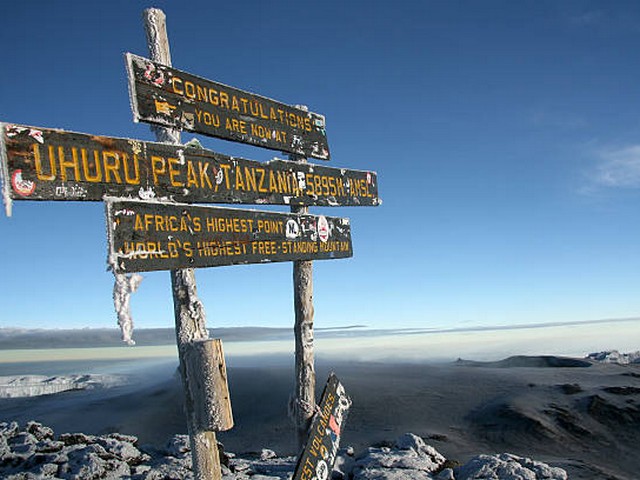Discover the Enchanted Wildlife of Kilimanjaro: Essential Facts for Trekkers
Nestled in the heart of Tanzania, Mount Kilimanjaro isn’t just a towering giant that beckons climbers from all corners of the globe; it’s also a vibrant ecosystem teeming with unique wildlife. As you prepare for the adventure of a lifetime, understanding the intricate tapestry of nature on this majestic mountain can enrich your trekking experience. Here at Kilimanjaro Centre for Trekking and Ecotourism (KCTE), we’re passionate about providing you with the best insights and preparations for your journey. Let’s embark on a virtual safari to uncover the extraordinary "Kilimanjaro Wildlife Facts For Trekkers" that make every ascent an unforgettable encounter with nature.
The Lush Lower Slopes: A Birder’s Paradise
Birdwatching Beyond the Ordinary
As you begin your ascent, the lower slopes of Kilimanjaro offer a lush, forested haven that is a birdwatcher’s dream. With over 179 bird species recorded, these forests are alive with the chirps and songs of exotic birds. Keep your binoculars ready for the dazzling Hartlaub’s Turaco or the elusive African Green Broadbill. Each step can unveil a new feathered friend, turning your trek into a delightful ornithological expedition.
The Small Yet Mighty: Insects and Reptiles
Don’t just look up! The undergrowth and the forest floors of Kilimanjaro are bustling with smaller yet equally fascinating wildlife. The vivid Suni Beetle or the Kilimanjaro Dung Beetle, unique to the region, play crucial roles in the ecological balance. Meanwhile, reptiles like the three-horned chameleon camouflage themselves in the lush greenery, creating perfect photo opportunities for the observant trekker.
Mid-Elevation Wonders: Monkeys and More
Primates on the Pathway
As you ascend to the montane forest belt, you’re likely to encounter troops of Blue Monkeys and the acrobatic Colobus Monkeys, known for their striking black and white fur and long ‘cape-like’ tails. Observing their social interactions and playful antics is a highlight that adds a touch of whimsy to your trek.
Flora as Fauna’s Backdrop
Amidst these primate playgrounds, the flora of Kilimanjaro provides a lush backdrop. The towering trees and dense bushes are not just beautiful; they are vital to the survival of the mountain’s wildlife, offering both food and shelter.
Alpine Desert: Survival of the Fittest
Unlikely Residents at High Altitudes
Reaching the alpine desert might seem like stepping onto another planet. The vegetation thins, and the landscape grows stark. However, life flourishes even here. The Kilimanjaro shrew, a small but hardy creature, has adapted to thrive in these tough conditions. The nectar-rich flowers of the high altitude Helichrysum newii provide vital food for the scarce but resilient insects of this zone.
The Summit: Encounters at the Top
The Winged Visitors
The summit of Kilimanjaro, Uhuru Peak, might seem too harsh for wildlife. Yet, even here, you might spot the hardy White-necked Raven, soaring above, adapted perfectly to the thin air and cold temperatures. These birds are a testament to the adaptability of life, encouraging every trekker as they make their final steps to the summit.
Human Impact and Conservation Efforts
Protecting Kilimanjaro’s Ecosystem
At KCTE, we are not only passionate about helping you explore Kilimanjaro but also about preserving its beauty for future generations. The delicate balance of this mountain ecosystem is maintained through strict conservation practices, and by trekking with us, you contribute to these efforts. We ensure that every trip is conducted with the utmost respect for the natural environment, minimizing human impact and supporting local conservation initiatives.
Why Trek with KCTE?
When you choose Kilimanjaro Centre for Trekking and Ecotourism (KCTE) for your climbing adventure, you’re not just embarking on a trek; you’re becoming part of a larger community dedicated to sustainable ecotourism. Our expert guides are not only skilled in safe climbing practices but are also knowledgeable about the wildlife and natural history of Kilimanjaro. They ensure that your journey is rich in learning and appreciation for the mountain’s natural wonders.
FAQs: Kilimanjaro Wildlife Insights
What is the best time to see wildlife on Kilimanjaro?
The best time for wildlife viewing is during the dry seasons, from late June to October and from December to March, when animals are more active and vegetation is less dense.
Are there any dangerous animals on Kilimanjaro?
Kilimanjaro is free from large predators, making it a safe environment for trekkers. However, it’s always important to listen to your guide and follow safety instructions.
How can trekkers help in conservation efforts?
Trekkers can help by following the ‘Leave No Trace’ principles, participating in eco-friendly tours, and spreading awareness about the mountain’s environmental needs and challenges.
Ready for Your Kilimanjaro Adventure?
Embarking on a trek to Mount Kilimanjaro is not just about conquering a physical peak; it’s an exploration into a vibrant ecosystem. Every step offers a new discovery, and with KCTE, those discoveries form the memories of a lifetime. Ready to witness the majestic wildlife and breathtaking landscapes of Kilimanjaro? Book your climbing adventure with Kilimanjaro Centre for Trekking and Ecotourism (KCTE) today, and step into a world where nature meets the sky.




